Posts Tagged ‘attorney’
A Day of Donating Bicycle Helmets in Westborough
We had a great day in Westborough last weekend: Two fun community events, great weather and we handed out 160 free bicycle helmets to children. For this, we partnered up with the Westborough Bicycle and Pedestrian Advisory Committee and the Boroughs Family Branch of the YMCA of Central Massachusetts.
Breakstone, White & Gluck donated the bicycle helmets as part of our Project KidSafe outreach. Attorney David W. White helped distribute the free helmets at Westborough’s Spring Festival, an event featuring just about everything which is hosted by the Rotary Club of Westborough. In addition to bicycle helmets, there was an amateur dog show, children’s carnival, road race, food vendors and the list goes on.
Attorney White and Bruce Tretter, chairman of the Westborough Bicycle and Pedestrian Advisory Committee, then went to hand out helmets at the Boroughs Family Branch of the YMCA of Central, which is nearby in Westborough.
“We had a lot of fun, though at times it was a little hectic because so many people were anxious to get helmets for their kids,” attorney David White said. He added, “Wearing a bicycle helmet is the most important step you can take to protect yourself as a cyclist and I hope the children and families left with new helmets and a new commitment to wear them every time they ride.”
Breakstone, White & Gluck donated these bike helmets through our Project KidSafe initiative. We have donated over 3,500 helmets to children in Massachusetts since 2013. By year’s end, we expect to have donated 6,000 helmets. Read more about our Project KidSafe outreach or our bicycle safety tips.
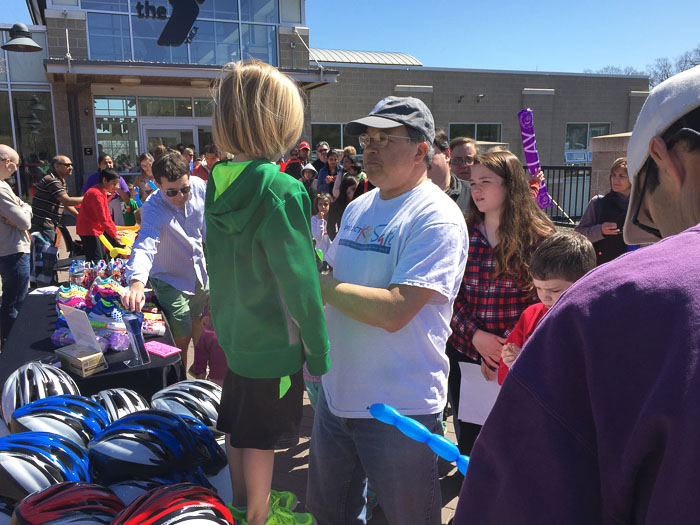
Photo: Attorney David W. White of Breakstone, White & Gluck helping a child at the Boroughs Family Branch of the YMCA of Central Massachusetts in Westborough.
![20150502-IMG_1751[1]-Edit.jpg](https://www.massachusettsinjurylawyerblog.com/wp-content/uploads/2016/05/20150502-IMG_17511-Edit.jpg) Photo: From left in back: Bruce Tretter, Chairman of the Westborough Bicycle and Pedestrian Advisory Committee; Betsy Moquin, Director of Marketing & Advancement of the Boroughs Family Branch of the YMCA of Central Massachusetts; and Attorney David W. White of Breakstone, White & Gluck.
Photo: From left in back: Bruce Tretter, Chairman of the Westborough Bicycle and Pedestrian Advisory Committee; Betsy Moquin, Director of Marketing & Advancement of the Boroughs Family Branch of the YMCA of Central Massachusetts; and Attorney David W. White of Breakstone, White & Gluck.
![20150502-IMG_1747[1].jpg](https://www.massachusettsinjurylawyerblog.com/wp-content/uploads/2016/05/20150502-IMG_17471.jpg) Photo: Bruce Tretter, Chairman of the Westborough Bicycle and Pedestrian Advisory Committee, helps a child find a helmet.
Photo: Bruce Tretter, Chairman of the Westborough Bicycle and Pedestrian Advisory Committee, helps a child find a helmet.
Check if Your Trek Bicycle Has Been Recalled
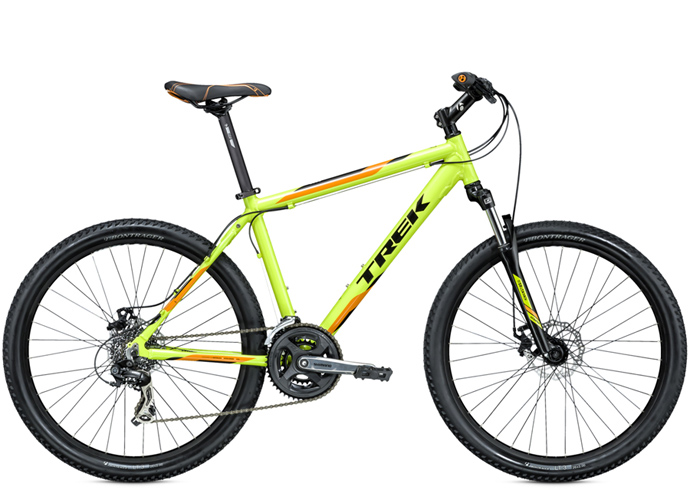
Nearly one million Trek bikes have been recalled after a cyclist was left paralyzed by an accident caused by a defective front disc brake.
About 900,000 bicycles in the U.S. and 98,000 bicycles in Canada were recalled recently by Trek Bicycle Corporation of Waterloo, Wisconsin. The recall involves bicycles sold nationwide from September 1999 through April 2015 for between $480 and $1,650.
Bicycles involved in the recall have a quick release lever on the bicycle’s front wheel hub that can come into contact with the front disc brake assembly, causing the front wheel to come to a sudden stop or separate from the bicycle, posing a risk of serious injury to the rider. Defective bicycles have a front quick release lever that expands beyond 180 degrees.
Trek issued the recall after reports of three injuries, including one person who suffered quadriplegia. A second person suffered facial injuries and another suffered a fractured wrist.
Consumers should stop using these Trek bicycles immediately. Call an authorized Trek retailer for a free inspection and installation of a new quick release on the front wheel of your bike. Trek is trying to encourage cyclists to seek the repair by offering a $20 coupon toward Bontrager merchandise.
Trek has not released a list of specific bicycle model numbers. Cyclists need to check their own bicycles and see if they are impacted by this recall. Some bicycles involved in this recall were purchased many years ago and owners may not have the original paperwork. Or you may have purchased one of these bicycles secondhand.
Do your due diligence and seek out a Massachusetts bicycle shop which sells Trek bicycles. Ask for a free inspection and have them make the free repair if needed.
Find a Trek bike dealer.
Read More
Free Bike Helmets for the Children at Framingham Earth Day Festival Last Weekend
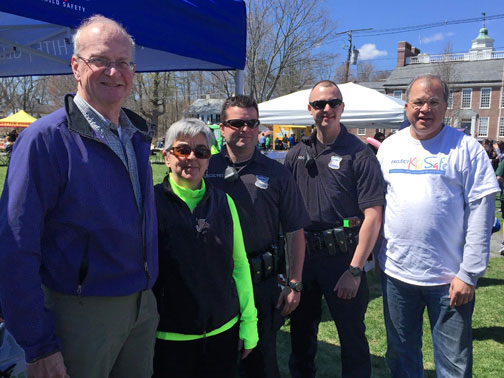
Photo left to right: Bill Hanson, chair of the Framingham Bicycle and Pedestrian Advisory Committee, volunteer Maura Kelly, Framingham police officers and Attorney David W. White of Breakstone, White & Gluck.
Breakstone, White & Gluck, the Framingham Bicycle and Pedestrian Advisory Committee, and the Framingham Police Department teamed up and gave away 120 bicycle helmets to children last weekend at the 5th Annual Framingham Earth Day Festival.
Breakstone, White & Gluck donated the helmets through our Project KidSafe initiative and attorney David W. White participated in the event, along with advisory committee members, including Bill Hanson, chair of the advisory committee, member Joseph Repoli, volunteer Maura Kelly and Framingham police officers.
Framingham Earth Day is held on the Framingham Centre Common and each year the event grows. It began in 2011 with 55 vendors encouraging residents to make eco-friendly choices. This year, nearly 100 vendors turned out. Breakstone, White & Gluck first participated in the festival last year.
Through our Project KidSafe initiative, Breakstone, White & Gluck has donated over 3,500 bicycle helmets to children in the Boston and Worcester areas. We expect to have donated more than 6,000 bicycle helmets by year’s end. Our goal is to encourage children to wear a bicycle helmet every time they ride.
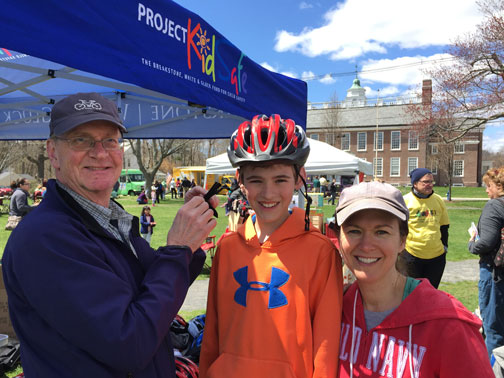
Cyclists of all ages should wear bicycle helmets to protect themselves from a serious head injury. But bicycle helmets are especially important for children, and they are required to wear them by law in Massachusetts.
Children suffer more than half of all bicycle-related injuries and deaths which require emergency department care each year, according to the Centers for Disease Control and Prevention (CDC). Some 26,000 of these bicycle-related injuries to children and teenagers are traumatic brain injuries treated in emergency rooms.
Watch this video on how to properly fit a bicycle helmet or visit our bike safety web page.
Read More
Will It Ever Stop Snowing in Massachusetts?
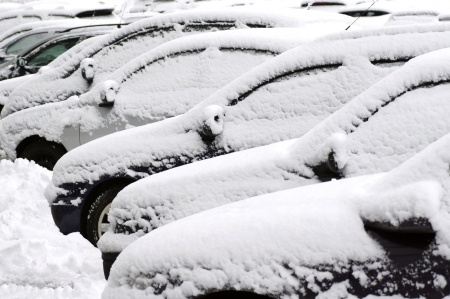
More snowfall today just means more frustration for many of us in Massachusetts. Before today, the Boston area had already seen more than 53 inches of snow this winter, 10 inches more than the total annual average. Worcester is also close to setting a record, recording 72 inches, just four inches away.
Much of the snow has fallen hard during the past two weeks, during the Blizzard of 2015 and other storms. A Washington Post headline summed it up best: “Boston’s record-setting snow blitz – a winter’s worth of snow in less than 10 days.”
Those 10 days should be done now. But Mother Nature just keeps throwing down snow, though she gave the Patriots a reprieve, allowing them to hold their Super Bowl parade in Boston this week. But even the professional football team had to postpone a day to avoid the bitter cold and to let the City of Boston catch up on the clean-up.
More snow is expected this weekend. A few things to remember:
Clearing Snow from Your Property. Homeowners in Massachusetts have a responsibility to clear the snow and ice from their driveways, walkways and other areas of their property. It is important to make sure your family and others, such as friends, postal carriers and delivery workers, can safely visit your property without slipping and falling.
If someone slips and falls on your property, you could be held liable for damages, even if they are uninvited. For a long time, Massachusetts law regarding snow and ice injuries exempted property owners from liability if someone was injured as a result of snow that naturally accumulated and had not been cleared. But in 2010, the Supreme Judicial Court overruled this nearly century old rule. There is now a clear directive that Massachusetts property owners must remove snow and ice. The case is Papadopoulos v. Target Corporation, SJC-10529 (July 26, 2010). Here is a past blog and a Lawyer Alert we wrote on the ruling.
Snow Blower. Make sure you read the instructions and understand your snow blower before using it in heavy snow conditions. If the snow blower is jammed DO NOT attempt to clear it by hand. Even if the blower is not running, it can have stored up mechanical energy that can deliver devastating injuries. Check with the manufacturer and the Consumer Product Safety Commission at the start of each winter to see if there have been any product recalls.
Here is a resource for safe use of snow blowers.
Shoveling Snow Safely. While you must clear the snow, you also have to be safe. Snow removal can lead to injuries, some minor and some very serious, such as heart attacks, dehydration, pulled muscles, broken bones from slip and falls and frostbite. Always consult with your doctor if you concerned about your ability to undertake this strenuous exercise.
If you shovel, drink plenty of water, stop periodically to stretch and dress in layers so you can easily remove one if you get overheated. Try to push the snow, rather than lift it, when you can. Here is an article about shoveling snow safely.
Driving and Taking Public Transportation. Be patient. Limit your time on the road if you can. The Governor of Massachusetts declared a state of emergency and travel ban during the recent blizzard. Many employers closed their offices then and since on other days of heavy snowfall.
When you have to travel, consider public transportation when you can or stagger your work day schedule if it helps and your employer allows this.
If you ride the MBTA, monitor the website, app or local TV stations. Red Line and Orange Line commuters faced significant delays this week, with 40 percent of the cars disabled for mechanical problems. Many commuters were left standing outside in the cold, waiting for trains or had to take buses. Systems are failing all over the state.
Walking. The snowbanks are tall and the roads narrow in many areas, making it hard to walk. If you must walk outside, wear visible clothing, including a bright safety vest if you have one, so you are visible to drivers. Walk on sidewalks and carefully look around snowbanks before stepping into the streets, even at crosswalks.
Watch out for regular traffic, as well as snow plows. A Weymouth woman was killed in a pedestrian accident this week when she was struck by a plow driver at her condominium complex.
Carry your cell phone in case of an emergency but do not use it while walking. Also do not wear headphones and listen to music when trying to face the complications of winter travel.
Read More
Make Sure Not to Buy from the “10 Worst Toys” of 2014 List
Before you shop, please check out the Worst Toys of 2014 list by W.A.T.C.H. Since last year, there have been at least 17 toy recalls in the U.S. and Canada, accounting for 5 million defective toys, reports the watchdog group which releases its list annually.
Shop carefully, even at familiar and trusted stores. Of course you should avoid the toys listed below. But make your own judgments on the safety of the toys you are considering. The main things to beware of are:
- Marbles and small pieces
- Sharp edges
- Small magnets
- Flimsy toy accessories or pieces which are loosely attached
- Toys with strings (such as musical instruments and necklaces)
- Toys which shoot sharp projectiles
Also, remember to buy toys which are age-appropriate, read the warnings on the toy box and watch out for toy packaging materials. Toys and many products come with an almost-invisible plastic lining on mirrors, digital screens and other pieces. Many also come with a lot of plastic wrap. These are all choking hazards and you should remove them before giving toys to children.
Here are the W.A.T.C.H. nominees for the “10 Worst Toys” of 2014.
1) Air Storm Firetek Bow
This toy is designed for children 8 years and older, but it shoots arrows up to 145 feet high in the air and can cause eye injuries. It has glow pieces and is marketed for day or night use, thought it warns against use in the “complete dark.” Finally, the packaging carries several other warnings, more than most people want when buying a toy. It sells for under $25 at Walmart and Amazon.com.
2) Radio Flyer Ziggle
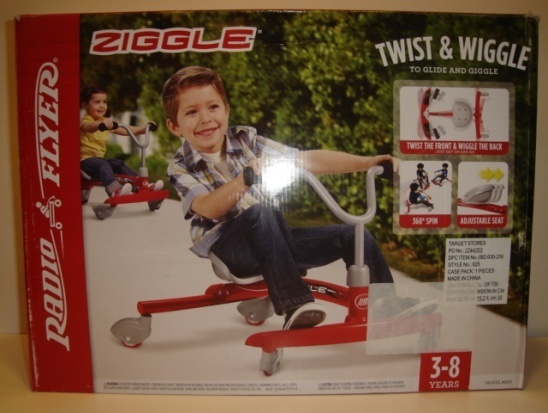 The seat on this bike is too low, just 8 inches off the ground, W.A.T.C.H. said. The bike’s packaging also features young children who are not wearing bike helmets, which puts them at risk for head injuries. The $39.99 bike is sold at Target, Toys R Us and Amazon.com and is recommended for children ages 3 to 8 years old.
The seat on this bike is too low, just 8 inches off the ground, W.A.T.C.H. said. The bike’s packaging also features young children who are not wearing bike helmets, which puts them at risk for head injuries. The $39.99 bike is sold at Target, Toys R Us and Amazon.com and is recommended for children ages 3 to 8 years old.
3) Catapencil
This pencil is also a catapult. The packaging encourages children to enjoy target practice from their desktops and reads, “Because the pencil is mightier than the sword.” There are no safety warnings or age recommendations. This $3.99 toy is sold at Amazon.com, Ebay.com and Learning Express.
4) Alphabet Zoo Rock and Stack Pull Toy
This toy has a 20-inch cord, which is eight inches longer than industry safety standards. It creates a strangulation risk for young children and the manufacturer even warns parents about this risk on the packaging. This toy is sold for $19.99 at Amazon.com, Toys R Us and Magic Beans stores.
5) SWAT Electric Machine Gun
Junxing Toys Industrial Co. warns buyers on the packaging that its toy gun may be mistaken for an actual firearm by law enforcement officers and others. W.A.T.C.H. rightfully says there is “no excuse for outfitting children with realistic toy weapons designed to produce potentially dangerous and unnecessary thrills.” The recent killing of a 12-year old, who was carrying a toy gun mistaken in for a real gun, in Cleveland is a serious reminder of this risk.
6) Wooden Instruments
This toy is designed for children 12 months and older, but includes a 4 ½ inch long drumstick which children can mouth and get lodged in their airway. Additionally, there are no warnings on the toy, which is sold at Walmart.
7) Bottle Rocket Party
This toy makes use of projectiles which can strike and injure a child. There are safety goggles advertised on the packaging, but they are not packed in the box. This toy by Norman & Globus is recommended for children age 8 and older and is sold for $14.99 at Walmart.com, Amazon.com and the Village Toy Shop.
8) Lil’ Cutesies – Best Friends
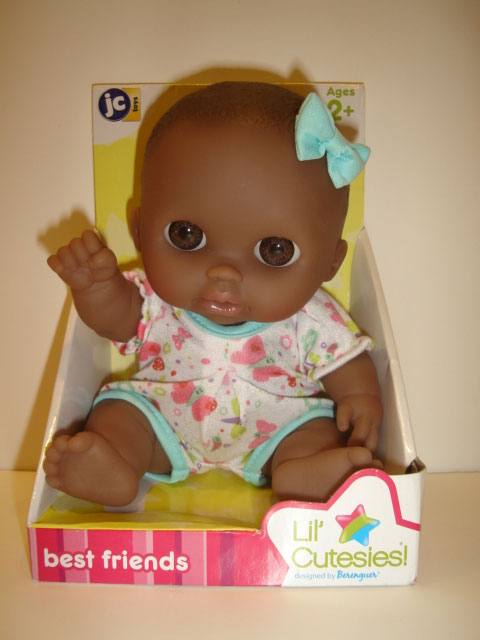 While advertised as the “perfect friend for your little one,” this toy is dangerous, according to the W.A.T.C.H. report. The decorative bow can detach from the doll’s head and pose a choking hazard. The toy is designed for children age 2 and older. It is sold for $7.99 or less at Kmart, Toysrus.com and Amazon.com.
While advertised as the “perfect friend for your little one,” this toy is dangerous, according to the W.A.T.C.H. report. The decorative bow can detach from the doll’s head and pose a choking hazard. The toy is designed for children age 2 and older. It is sold for $7.99 or less at Kmart, Toysrus.com and Amazon.com.
9) True Legends Orcs Battle Hammer
This hammer is marketed to children as young as 3 years old, yet it comes with a hammer which stretches nearly 2 feet. Do not look for safety warnings and instructions–there are none! It is distributed by Toys R Us and sold at stores for under $15.
10) Colored Hedgehog
The hedgehog’s hair can be easily pulled out, posing a risk for ingestion and aspiration injuries, W.A.T.C.H. says. This infant toy is sold for $10.99 at Toys R Us.
Read the full Worst Toys of 2014 list. Photo credit on this blog: W.A.T.C.H. and the Worst Toys of 2014 report.
Read More
Shop Carefully for Strollers, Car Seats and Holiday Gifts for Families
 Ready or not, the holiday shopping season begins in earnest this week. Enjoy shopping for loved ones, but remember to buy with caution, especially when selecting toys and products used by young children. The Consumer Product Safety Commission (CPSC) recalled millions of unsafe toys this year, and also many of the most basic children’s products, including car seats, strollers and furniture. Shoppers should closely examine every purchase. Here are a few holiday shopping tips:
Ready or not, the holiday shopping season begins in earnest this week. Enjoy shopping for loved ones, but remember to buy with caution, especially when selecting toys and products used by young children. The Consumer Product Safety Commission (CPSC) recalled millions of unsafe toys this year, and also many of the most basic children’s products, including car seats, strollers and furniture. Shoppers should closely examine every purchase. Here are a few holiday shopping tips:
Check for recalls. Search the CPSC database to see if a specific product has been recalled. You can also search by company.
Here are some of the important ones to remember:
Graco Recalls. Graco recalled millions of car seats earlier this year because of sticky-buckles which were trapping children in the seats. Just last week, it also recalled 4.7 million defective strollers which can cause finger amputation. Graco recalled the 11 stroller models after 10 fingertip amputations and one finger laceration. The strollers were sold from 2010 until earlier this month at a number of retailers, including Target, Toys R Us, Walmart, Amazon.com and Walmart.com. Read the recall notice.
Furniture Recalls. Common home furniture also caused child injuries this year. In August, Ace Bayou recalled 2.2 million bean bag chairs after two children unzipped them, crawled inside and suffocated to death. Anyone with one of these defective chairs should call the company for a repair kit to disable the zipper.
Another serious recall impacted in Massachusetts. Earlier in the year, Lane furniture renewed its recall of wooden cedar chests after two children in Franklin became trapped in one and suffocated. The children had apparently been playing hide-and-seek and became locked inside. The company first recalled the chests in 1996, but millions of the defective chests are believed to still be in use without the necessary repair.
In the Massachusetts case, the children’s family is believed to have bought the used chest at a second-hand store more than a decade ago. Second-hand sales are challenging to regulate, as are families and friends who pass along used products to each other. This makes it important to know the characteristics of an unsafe product as well as specific products which have been recalled.
Buy age-appropriate. Read the age recommendation on toys and children’s products. Consider a child’s family. If you are buying for a child with younger siblings, buy something which is safe for all ages in the household.
Be careful buying online. After a product is recalled, it is against the law to sell it in stores or online. But some auction and online listing websites do not police private sellers closely. Avoid these sites when holiday shopping for children.
If you purchase through a merchant website such as Amazon.com, make sure you receive the right product and that it has the same age appropriate label and pieces as shown online.
Beware of suffocation and choking hazards. Avoid balloons, marbles and toys with small pieces which children can put in their mouth. Also avoid small magnets. Remember these things come with many toys, but they also come from other gifts and products that enter a home. For instance, the magnet desk sets which were so popular many years ago for adults turned out to be extremely dangerous for children. In some cases with the Buckyball magnet sets (which have been recalled), children found small magnets years after families brought the set into their home in hard-to-reach places, such as under a couch. Our point is: Please consider every gift carefully.
Read More
Report: Helmet Use Encouraged After Increase in Cyclist Deaths
 After years of decline, a new report reveals that there has been an increase in the number of cyclists killed in motor vehicle accidents since 2010.
After years of decline, a new report reveals that there has been an increase in the number of cyclists killed in motor vehicle accidents since 2010.
The Governors Highway Safety Administration (GHSA) released the, “Spotlight on Highway Safety: Bicyclist Safety” report on Oct. 27th. The report shows cycling deaths have increased 16 percent from 2010 to 2012, from 621 to 722 cyclist fatalities. During that time, Massachusetts saw the numbers almost double, from seven cyclist deaths in 2010 to 15 in 2012. The majority of cyclist deaths came from six states, including California, Florida, Illinois, New York, Michigan and Texas.
During this period, other deaths in motor vehicle accidents increased by just one percent.
Two thirds or more of cyclists killed in 2012 were not wearing bike helmets, “a major contributing factor” in deaths because many cyclists suffer serious head injuries, the GHSA said.
More details from the report:
Bike helmet use. Citing 2012 Fatality Analysis Reporting (FARS) data, the GHSA report showed 65 percent of cyclists who died in 2012 were not wearing a bike helmet. Meanwhile, just 17 percent of cyclists were confirmed to be wearing one. Helmet use was unknown for the remaining 18 percent.
Twenty one states, including Massachusetts, have laws mandating bike helmet use for children. But none requires helmet use for adult riders and the GHSA said use has to be encouraged.
In Boston, city officials have raised the idea of mandating bike helmet use. It would not be the first city to do so. Sykesville, Maryland requires cyclists of all ages to wear bike helmets. But such ordinances are largely controversial. Dallas, Texas passed a law mandating helmets for all ages, but city officials revised it this summer, limiting it to cyclists who are 17 and under.
As it stands in Boston, riders of the Hubway bike share must agree to wear bike helmets when they sign up. The City of Boston has actively promoted bike helmet use over the years through advertising campaigns and community outreach programs.
Breakstone, White & Gluck has also worked to increase bike helmet use among children in Massachusetts. Over the past two years, we have donated 3,000 bike helmets through community organizations. We are proud of this work and will be back in 2015.
Our program partners include: Boston Bikes’ Roll It Forward, a program run by the City of Boston, Worcester Earn a Bike, CYCLE Kids, Cambridge Public Schools, Somerville Public Schools, Bikes Not Bombs, Framingham Bicycle and Pedestrian Committee, East Arlington Livable Streets and Arlington Public Schools, Watertown Bicycle and Pedestrian Committee, Westborough Bicycle and Pedestrian Committee, Somerville Kiwanis, Dedham Bike Rodeo, Boston Cyclists Union, Arlington Town Day, Westwood Bicycle and Pedestrian Committee, Lexington Bicycle Advisory Committee and the Ashland Farmer’s Market and iCan Shine Camp of Arlington.
State safety efforts. The GHSA touched on safety improvements which communities can make and strongly encouraged development of cycle paths. These go a step further than traditional bike lanes and physically separate motor vehicle traffic from cyclists on the road with flexible posts or other safety measures.
If communities cannot add cycle paths, the GHSA suggests adding marked bike lanes, bike boxes which designate space in a lane for bikes at intersections, and separate bike traffic signals with advance lights for cyclists.
Boston has a 5-year action plan to build 21 miles of cycle tracks in various areas of the city.
Read the full report, “Spotlight on Highway Safety: Bicyclist Safety.”
Read More
Brockton Pedestrian Accidents Surge, City Officials Unveil Safety Plan
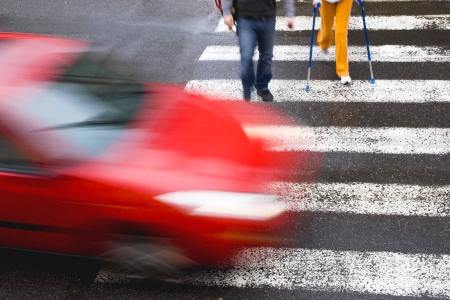 The mayor of Brockton has announced a plan to improve safety for those walking in the city. The city has seen an increase in pedestrian accidents, which have recently killed 8 pedestrians and injured 75 others. Seven of the eight pedestrian deaths have occurred since August 12.
The mayor of Brockton has announced a plan to improve safety for those walking in the city. The city has seen an increase in pedestrian accidents, which have recently killed 8 pedestrians and injured 75 others. Seven of the eight pedestrian deaths have occurred since August 12.
Two victims were children, and in one case, police are still searching for the hit-and-run driver. In 2013, the city saw one fatal pedestrian accident.
Mayor Bill Carpenter proposed the safety plan on Monday, which draws on resources from a number of state and local agencies, including the Massachusetts State Police, Brockton Police, the city’s Board of Health, the Massachusetts Department of Transportation, the Safe Routes Alliance and Brockton Area Transit.
His plan will focus on three areas: engineering, enforcement and education. Some of the measures still require approval from the city Finance Committee.
Educational Awareness Campaign. The city will launch a pedestrian safety awareness campaign to educate both drivers and pedestrians. One focus will be to reduce use of electronic devices and cell phones by everyone on the road. Public service announcements, video documentaries and other safety materials will be introduced to students in Brockton Public Schools.
Increased Walking Patrols. These will be expanded in high-traffic areas, to allow officers to provide pedestrians and cyclists with safety information when they put themselves in harm’s way.
Increased Traffic Patrols in High-Crash Areas. The Massachusetts State Police will work with Brockton to increase patrols in high traffic areas.
Scarecrow Patrol Cars. Brockton Police will deploy “scarecrow” cruisers at some dangerous intersections. These have no officers, but are meant to put drivers who do not know that on alert.
Clearing Sidewalks. The city’s Board of Health will conduct enforcement to make sure sidewalks are clear and can be safely used by pedestrians.
Traffic Signals. The city will consider adding pedestrian countdown features to the traffic signals on Belmont Street. At the same time, the Mass Department of Transportation is now conducting a review of traffic signals across the city.
Brockton is not the only community which has seen an increase in pedestrian accidents. Nationwide, fatal pedestrian accidents increased 6 percent from 2011 to 2012, according to the National Highway Traffic Safety Administration’s most recent figures. More than 33,000 were killed or about one every two hours.
Cyclist accidents are also on the rise, with a 16 percent increase from 2010 to 2012, according to the Governors Highway Safety Administration.
Read More
Boston City Council Passes Truck Side Guard Ordinance
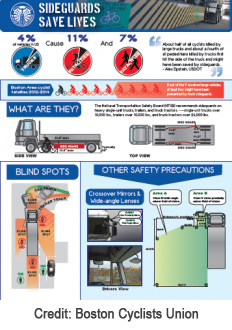 The Boston City Council has passed the Truck Side Guard Ordinance, the first of its kind in the nation. The ordinance will require side guards, convex mirrors, cross-over mirrors, and blind-spot awareness decals on all city-contracted vehicles over 10,000 pounds (or for tractor-trailer trucks with a combined weight over 26,000 pounds).
The Boston City Council has passed the Truck Side Guard Ordinance, the first of its kind in the nation. The ordinance will require side guards, convex mirrors, cross-over mirrors, and blind-spot awareness decals on all city-contracted vehicles over 10,000 pounds (or for tractor-trailer trucks with a combined weight over 26,000 pounds).
This ordinance passed quickly and unanimously last week. Mayor Martin J. Walsh, At-Large Boston City Councilor Ayanna Pressley and the Boston Cyclists Union, a non-profit advocacy group, filed the proposed ordinance on September 9th; it was approved by the council on Oct. 29th. It takes effect 180 days after passage and applies to all future contracts.
Side guards are meant to reduce injuries to drivers, cyclists and pedestrians by closing off the space under a truck. The National Transportation Safety Board recommended a side guard protocol last April, reporting that large truck side impacts comprised of 15 percent of fatal two-vehicle collisions between large trucks and passenger vehicles in 2011. In the United Kingdom, mandated side guards on large trucks reduced cyclist deaths by 61 percent and serious injuries to cyclists by 13 percent, according to a Transport for London study.
Boston’s goal is to protect cyclists, pedestrians and other drivers, but cyclists have faced especially hard road conditions in recent years. Since 2010, 11 cyclists have been killed in Boston, seven in bike accidents which involved a truck or bus, according to city figures. Injuries to cyclists from other causes have also increased, even though the city has developed Boston’s cycling infrastructure dramatically in recent years. The City continues to expand bike lanes and to work on cycle track projects which will put a physical barrier between cyclists and traffic.
Others may soon follow Boston in passing a truck side guard ordinance. Lawmakers in New York have proposed legislation that would mandate side under-ride guards on trucks, tractors, tractor trailers and semi-trailers. In Massachusetts, Somerville, Cambridge and Newton are also considering ordinances. Elsewhere, Portland and Washington D.C. also have proposed legislations or restrictions.
A few additional points:
Pilot Program. Boston began looking at truck side guards in 2013, when the Mayor’s Office of New Urban Mechanics and the city’s Public Works Department undertook a municipal pilot study of truck side guards.
Inspection. Vehicles associated with an awarded city contract will be inspected for side guards by the Inspectional Services Department and issued a permit, certifying the vehicle for 2-years.
Enforcement. Businesses will face a fine for vehicles which are not in compliance. The fines start at $100 for the first offense and rise with repeated violations to potential contract termination. The Boston Police Department will assist with enforcement.
Other City Offices. The Boston Transportation Department and Boston Bikes will assist with education, content expertise on best practice and as the point of contact for constituent reporting.
Exemptions. There are some exemptions, such as for trucks which are used exclusively for snow plowing or emergency vehicles.
Read more about Boston’s new truck ordinance.
About Breakstone, White & Gluck
The Boston personal injury lawyers at Breakstone, White & Gluck have over 100 years combined experience representing injured cyclists and pedestrians. For a free legal consultation, visit 800-379-1244 or 617-723-7676 or use our contact form.
Replace Your Smoke Alarm Batteries As Daylight Saving Time Ends
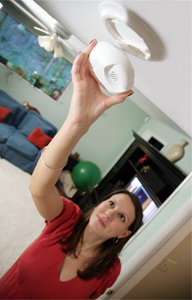 Many of us are thinking about Halloween today. But Daylight Saving Time also ends this weekend. While setting your clocks back, remember to replace your smoke alarm batteries and test to make sure they work properly.
Many of us are thinking about Halloween today. But Daylight Saving Time also ends this weekend. While setting your clocks back, remember to replace your smoke alarm batteries and test to make sure they work properly.
As we approach winter, we increase use of electrical appliances and the risk for home heating fires rise. In fact, half of all home heating fires happen in December, January and February. The death rate in homes with no working smoke alarms is twice as high as those with alarms, according to the National Fire Protection Association. Often, homes have smoke alarms but the batteries are missing disconnected or dead.
Make as many of these safety checks as you can this weekend:
Smoke alarms. Replace your smoke alarm batteries in every unit of your home and smoke alarms which are 10 years old. Also check if your smoke alarm model has been recalled. Kidde recalled 1.2 million smoke and carbon monoxide alarms in September. You can search for other recalls at www.cpsc.gov.
Carbon monoxide detectors. The state of Massachusetts began requiring carbon monoxide detectors in every residence in 2006 and many home owners have passed the 5-7 year lifespan of their models. Check if yours needs to be replaced. If you have a combination smoke alarm/carbon monoxide detector, check the unit’s specific instructions.
Washing machines and dryers. Clothes dryers are responsible for many home fires, but most can be prevented by regularly checking and cleaning the filters. Clean your models out now.
Cooking. Unattended cooking is the leading cause of cooking fires. Clear out any clutter in your kitchen now so you have plenty of room to set out your ingredients in advance. Find a cabinet or drawer to store anything you may need so you do not have to leave the room while cooking. Make sure you have a functioning fire extinguisher.
Home heating. Arrange for oil delivery or have your chimney or wood stove professionally cleaned. If you are using a space heater, take a few minutes to read our home heating safety tips. Each year, space heaters cause 80 percent of home heating fire deaths and one third of all home heating fires.
Get ready for the snow. Get your snow hat, gloves, shovel and road salt ready now and set them aside in the same place throughout the winter. When it snows, you want to be able to easily find them so you can clear your front steps and driveway so no one slips and falls in the snow and ice.
Cords. Walk through every room of your home and see what is plugged into the electrical outlets. Look under beds, behind computers, in power supplies and in your children’s rooms. Unplug cords you are not using and put them in a drawer until you need them. Pay extra attention to the USB cords for your tablets and cell phones and replace them if they look old or worn.
Get your car ready. Take a few precautions and reduce the stress of traveling in the snow. Collect and pack away ice scrapers and small shovels as well as an extra hat, pair of gloves and clothing in case you become stuck while traveling. Also pack a couple flashlights, a non-perishable snack, such as a granola bar, and make sure all your vehicle paperwork is easily accessible in the glove compartment.
Read More

